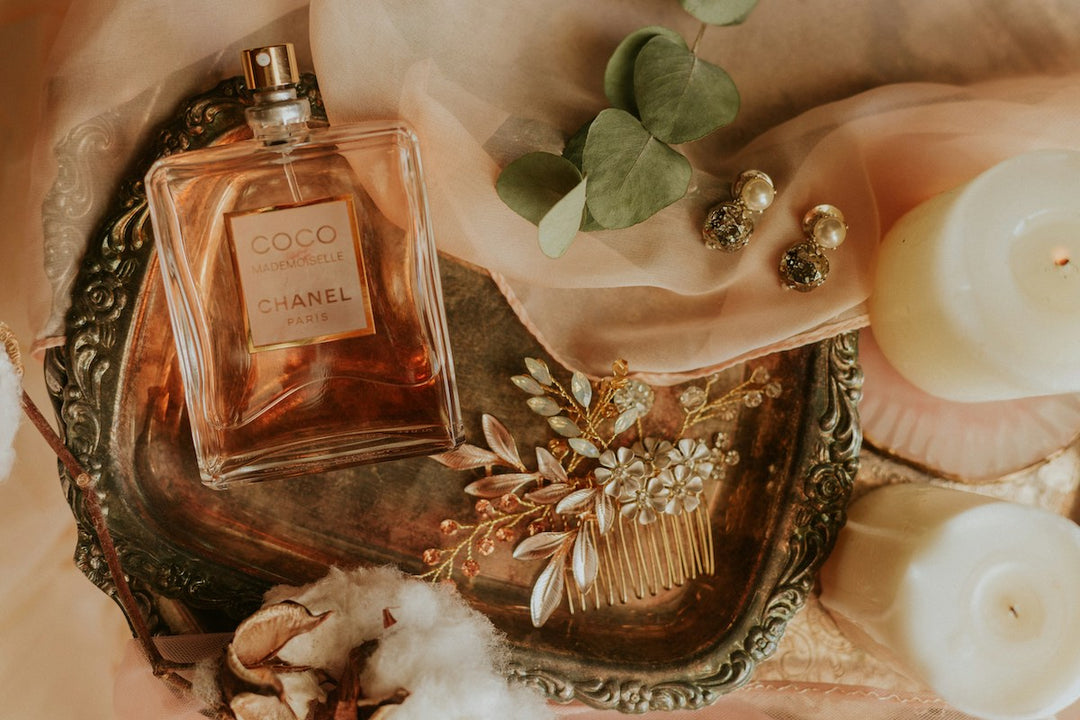Knitwear, while cosy and stylish, can be a bit tricky to care for, so the best way to take care of knitwear is keeping them folded and stored in boxes rather than hanging. Regular rotation is also advised to keep it fresh and ward off creases.
Whether it's a chunky knit cardigan or a delicate cashmere scarf, proper care can significantly extend its lifespan.
From washing tips to storage advice, we're here to guide you through the process.
Knitwear Fabric
Knitwear is unique amongst its other fabric comrades, and this distinctiveness primarily stems from its very structure. Intricate knitting methods give birth to a cloth that consists of a series of intertwined loops called stitches. This looped structure is what gives knitwear its signature flexibility and elasticity.
While knitwear may appear robust and resilient, it's actually quite the delicate darling. Don't let its flexible nature fool you, as every loop and interweave has the potential for snags, stretch, and damage, especially if manhandled. Therefore, taking good care of it is essential for keeping its quality intact.
To give your knitwear garments the tender loving care they deserve, it's crucial to know the different types of knit fabric. While there are countless varieties, some of the most common ones include:
-
Jersey: This is a lightweight, stretchy fabric that's used primarily for T-shirts.
-
Rib knit: This type is highly elastic and often used in cuffs, necklines, and trim.
-
Interlock: Noted for its double-knitted structure, it's a good pick for heavier garments such as sweatshirts.
-
Pique knit: Identified by its waffle-like appearance, it's often chosen for polo shirts.
Try feeling your knitwear fabric to pinpoint the type it belongs to. This can help you better appreciate its specific care requirements. Equipped with this knowledge, you're now ready to jump in the finer points of knitwear care, including washing, drying, and storing.
Note the circle back to the previous context and the reference to the upcoming ones, seamlessly maintaining the entire article's flow. The ongoing narrative will further guide you on providing the best possible care methods to maintain your wardrobe's prized knitwear, keeping them as stunning as the day they were bought.
Cleaning and Washing Knitwear
Now that you're familiarised with the unique structure of different types of knits, you're ready for what comes next. Proper care of knitwear isn't merely about storage but also the cleaning process. Let's explore the necessary steps for cleaning and maintaining knitwear.
Washing knitwear sounds easy, doesn't it? But the technique differs considerably from regular laundry. Ocassionally they demand hand washing and other times, gentle machine washing is the go-to. You're likely to find detailed instructions on fabric care labels, genuinely your knitwear's best friend.
Hand Washing
Hand washing is generally suitable for most knitwear. It's gentle on the fabric, reduces the chance of snags, and maintains the shape. Here are the basic steps:
-
Fill a sink or basin with cold water.
-
Add a small amount of gentle detergent.
-
Immerse your knitwear, giving it a gentle squeeze to ensure the detergent is evenly distributed.
-
Rinse thoroughly and carefully squeeze out the excess water. Do not wring or twist the knitwear as it may cause stretching or misshaping.
Machine Washing
If you're strapped for time, machine washing on a delicate cycle can be your saviour. Remember, not all knitwear pieces permit machine washing, so always check your care label.
-
Use cold water and mild detergent. Avoid using bleach at all costs.
-
To protect your knitwear, place it inside a mesh laundry bag.
-
Select a delicate or hand wash cycle.
Clothes dryers are no friends to knitwear. Air drying knitwear flat is usually the rule of thumb. It keeps the shape intact and reduces the odd chances of shrinkage.
Now you've garnered some invaluable tips on cleaning knitwear. This will surely extend the life of your knit fabrics, whether it's a jersey top, a rib knit jumper, an interlock dress, or a pique knit polo.
Drying and Handling Knitwear
To extend the longevity of your knitwear, the drying process is equally critical as the washing method. Key rule: never hang your knitwear, as it might distort the garment's original shape due to gravity.
Here's a quick drying guide for you:
Air-drying: Lay flat - that's the sacred mantra to remember. Once you have washed the knitwear, gently squeeze out excess water. Do not, in any circumstance, wring it. Spread it out on a clean, dry towel and roll up the towel to draw out any leftover moisture. Then, lay your knitwear flat on a fresh, dry towel in a well-ventilated area, shaping it back to form if necessary.
Using a Dryer: If the care instructions allow, make sure to use the gentlest cycle with cold air setting. Remove promptly once the cycle ends. Keep in mind, overuse of mechanical dryers can lead to damage in the long run. It's always worth the patience for air-drying.
Beyond drying, here's a guide to storing your valued knitwear adequately:
-
Fold, don't hang. Hanging can lead to deformation.
-
Store in cool, dry places and prevent exposure to direct sunlight. It can cause fading and damage.
-
A clean knitwear is a moth-resistant knitwear. Moths enjoy sweat and body oils present on clothing. Always store clean garments.
Moving to the subtype - knit trousers, these are high-maintenance. For such delicate knitwear - professional cleaning is advised if you're uncertain about its aftercare.
While handling knitwear might seem like a tedious task, it's not as formidable as it sounds. Just keep these tips in mind, and you'll watch your knitwear outlasting seasons, becoming cherished keepsakes. For an added benefit, you're not only saving your clothes but also playing your part in sustainable fashion. Respecting your clothes, ensuring their care, you're contributing to a more sustainable world. Isn't that thought comforting?
Remember - every knitwear is unique and requires specific care. These guidelines can offer start, but always remember to check the care label on your garment for the best results.
Removing Stains from Knitwear
Let's face it: stains happen. No matter how careful you are, in the hustle of life it's all too easy to spill something on your favourite knitwear. But you needn't dwell on these mishaps. With the proper tools and techniques, stain removal can be a straightforward process.
When it comes to treating stains, acting fast can make all the difference. Remember: fresh stains are easier to remove. If a spill happens, blot it immediately. Don't rub as this can cause the colour to go deeper into the fibres. To blot a stain, press a clean cloth or paper towel against it, absorbing as much as you can.
Do not use hot water for these initial steps, as it may cause the stain to set. Opt for cold or lukewarm water instead.
Using a stain remover is advisable for stubborn or dried stains. Test a small amount on an inconspicuous area of the garment to verify it won't affect the fabric's colour or texture. Once you've ensured it's safe, apply the stain remover as per the instructions on the product. Let it sit for a while (as long as the product's directions suggest).
After this treatment, you'll want to wash your knitwear as usual. A gentle, colour-safe detergent should be your go-to here.
If you've got delicate knitwear items or stubborn stains, it might be best to turn to professionals for help. Dry cleaners have specialised equipment and know-how to address these issues without jeopardizing the integrity of your garments.
By following these steps, you're sure to keep your knitwear looking its best. After all, the right care for your knitwear not only ensures they look good but can significantly extend their lifecycle, contributing to more sustainable fashion practices. Always remember to check the care label for specific cleaning instructions.
And, as we move forward, we'll discuss different types of knitwear and their unique care needs.
Storing Knitwear Properly
Ensuring your knitwear keeps its shape is an integral part of caring for your garments. Misshapen knitwear not only lacks glamour but also reveals poor storage practices.
The first rule of storing knitwear is to never hang your items. Hanging knitwear can distort their structure, causing unwanted stretching or hanger marks. Instead, fold your knitwear neatly to maintain its integrity. Flat surfaces are best for piled clothes – drawers or shelves should work perfectly.
Perhaps, you're worried about space or your wardrobe's organization. If that's the case, consider storage boxes. These are excellent for both organisation and space optimisation. Remember, it's essential not to overfill your boxes. Overstuffing can lead to crowding and the development of wrinkles.
Proper storage of knitwear is not merely about folding and putting them away. It's also about maintaining the fabric quality. Protect your items against dust, moisture, and pests with a few silica gel packets. They help to wick away humidity that could fade or dampen your clothing.
Moreover, a must-know tip is to store your clothes clean. Stains or smells can become more pronounced over time and attract pests. So, give your knitwear a good wash or dry clean before you store it. As mentioned previously, always consult care labels to ensure proper cleaning.
It's also wise to rotate your knitwear frequently. This way, you'll keep things fresh and reduce the chances of developing creases. Furthermore, you'll be surprised at the forgotten treasures you might rediscover in the rotation process.
Now that you're equipped with knowledge about storing knitwear properly, there's no doubt that your knitwear will retain its shape and fabric quality for longer periods. So, fold away and keep those garments looking as fresh as the day you bought them. After all, quality knitwear is an investment worth protecting. Above all, when it's cared for correctly, it can remain a comfortable and stylish part of your wardrobe for years to come.
Frequently Asked Questions
Why is it important to care for knitwear?
Caring for knitwear is essential to maintain its shape, fabric and quality. Proper care also prevents it from creasing, becoming stained, or damaged by pests.
What is the recommended method for removing stains from knitwear?
The article suggests following specific instructions for stain removal provided by knitwear manufacturers. It emphasises the need to treat the stain immediately to prevent it from becoming a permanent mark.
How should knitwear be stored?
Knitwear should be folded and stored in boxes rather than hanging. Regular rotation is also advised to keep it fresh and ward off creases.
What are silica gel packets used for in knitwear storage?
Silica gel packets help protect knitwear against dust, moisture, and pests. They maintain the integrity and quality of the fabric.
How can proper storage improve the durability of knitwear?
Proper storage prevents the development of creases, protects against damage, and keeps the garment fresh. This, in turn, maintains the shape, fabric quality, and prolongs the lifespan of the knitwear.
Summary of Taking Care of Knitwear
So, you've now got the know-how to keep your knitwear looking its best. Remember, it's not just about stain removal but also about how you store your knits. Folding, not hanging, is key and using storage boxes can help maintain their shape.
Don't forget those silica gel packets either - they're a small addition but they'll work wonders in protecting your garments from dust, moisture, and pests. Finally, keep rotating your knitwear to avoid those pesky creases.
With these tips, you're set to extend the life of your knitwear and keep them in top-notch condition for years to come. It's all about the right care and attention to detail.






Leave a comment